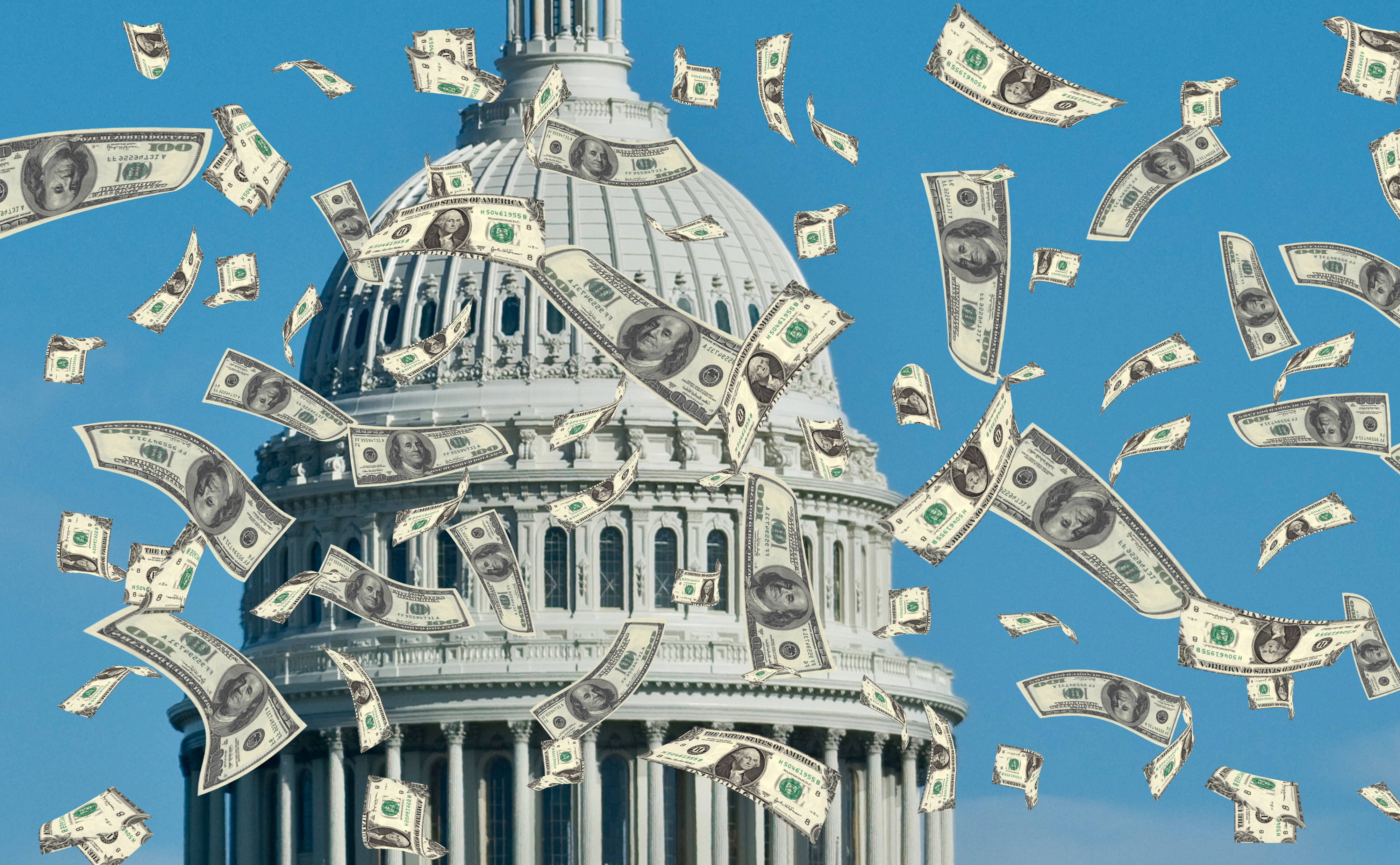Fatten Your Paycheck -- And Still Get a Refund
If you adjust your withholding now, Uncle Sam will take a smaller tax bite each month and still owe you next spring.

As we hit the midyear mark, most taxpayers already have banked a healthy tax refund for next spring.
After all, the average tax refund this year was almost $2,700. Assuming it will be about the same next year (and history suggests it will be slightly higher), that means, on average, taxpayers who get refunds are letting the IRS take about $225 more out of their paychecks each month than the government deserves.
| Row 0 - Cell 0 | Easy-to-Use Withholding Calculator |
| Row 1 - Cell 0 | Get a Head Start on Next Year's Taxes |
| Row 2 - Cell 0 | The Kiplinger Tax Center |
But here's the good news: There's an easy way to put an end to that overwithholding, fatten your paychecks for the rest of 2009 and still get a tax refund next spring.
From just $107.88 $24.99 for Kiplinger Personal Finance
Become a smarter, better informed investor. Subscribe from just $107.88 $24.99, plus get up to 4 Special Issues

Sign up for Kiplinger’s Free Newsletters
Profit and prosper with the best of expert advice on investing, taxes, retirement, personal finance and more - straight to your e-mail.
Profit and prosper with the best of expert advice - straight to your e-mail.
All you have to do is file a revised Form W-4 with your employer. The information on the W-4 determines how much federal income tax is withheld from your checks. The more "allowances" you claim on the form, the less tax is withheld from your pay.
Let's go back to that average taxpayer. If he's in the 15% tax bracket -- with taxable income between $8,350 and $33,950 if he's filing a single return or between $16,700 and $67,900 if he's married filing jointly -- claiming an extra five allowances would reduce withholding by about $230 a month. He'd get an extra $230 in his paychecks each month, and the IRS would still be withholding enough to cover the tax bill on his earnings for the rest of the year. And because he's already suffered through months of overwithholding, he'd still get a tax refund of more than $1,000 next spring.
How do you know how many allowances to claim to match withholding to your actual tax bill? Worksheets that come with the W-4 will help, and you can get more detailed instructions in IRS Publication 919, How Do I Adjust My Tax Withholding? Or you can struggle through the IRS's online withholding calculator.
A quick and easy method
But we've come up with an easier way to get a fix on how many extra allowances you should be claiming. Assuming your financial situation is similar this year to what it was in 2008, just use Kiplinger.com's Tax Withholding Calculator: Answer three simple questions (you'll find the answers on the tax return you filed earlier this year), and we'll estimate how many additional allowances you deserve. Better yet, we'll tell you how much your take-home pay will increase starting next payday if you claim the allowances on a new W-4.
Our quick and easy method is designed as a rough guide, not gospel. And it's based on the assumption that your financial life in 2009 is pretty similar to your life in 2008. If you have a baby, get a new job or have an adult child who qualified as a dependent last year but no longer does, for example, the calculator won't reflect how such events will affect your tax bill and your tax withholding.
But for most Americans, it should quickly accomplish two important goals:
- Get you motivated to grab a W-4 to pinpoint how many extra allowances you should be claiming.
- Get more of your money to you as you earn it, rather than keep you waiting for a tax refund next spring.
Profit and prosper with the best of Kiplinger's advice on investing, taxes, retirement, personal finance and much more. Delivered daily. Enter your email in the box and click Sign Me Up.

-
 Verizon’s 4-Line Phone Promo Offers Strong Value for Families Upgrading to Premium Devices
Verizon’s 4-Line Phone Promo Offers Strong Value for Families Upgrading to Premium DevicesFamilies can upgrade to top-tier smartphones for $25 a line with Verizon’s newest offer.
-
 Where to Store Your Cash in 2026
Where to Store Your Cash in 2026Set yourself up for success with these strategies.
-
 How Much Income You Really Need to Afford a $500,000 Home
How Much Income You Really Need to Afford a $500,000 HomeAs home prices increase, the income needed for a house is also climbing. We break down what you need to earn to afford a $500,000 home.
-
 The 'Scrooge' Strategy: How to Turn Your Old Junk Into a Tax Deduction
The 'Scrooge' Strategy: How to Turn Your Old Junk Into a Tax DeductionTax Deductions We break down the IRS rules for non-cash charitable contributions. Plus, here's a handy checklist before you donate to charity this year.
-
 IRS Says You Made a Tax Return Mistake? A New Law Could Help You Fight Back
IRS Says You Made a Tax Return Mistake? A New Law Could Help You Fight BackTax Law Updated taxpayer protections change what the IRS must explain on error notices and how long you have to respond.
-
 Tax Refund Alert: House GOP Predicts 'Average' $1,000 Payouts in 2026
Tax Refund Alert: House GOP Predicts 'Average' $1,000 Payouts in 2026Tax Refunds Here's how the IRS tax refund outlook for 2026 is changing and what steps you can take now to prepare.
-
 New 2026 Tax Change Could Mean More for Your IRA and 401(k) Savings
New 2026 Tax Change Could Mean More for Your IRA and 401(k) SavingsRetirement Savings Here's how the new IRS inflation adjustments will increase the contribution limits for your 401(k) and IRA in the new year.
-
 3 Ways High-Income Earners Can Maximize Their Charitable Donations in 2025
3 Ways High-Income Earners Can Maximize Their Charitable Donations in 2025Tax Deductions New charitable giving tax rules will soon lower your deduction for donations to charity — here’s what you should do now.
-
 10 Retirement Tax Plan Moves to Make Before December 31
10 Retirement Tax Plan Moves to Make Before December 31Retirement Taxes Proactively reviewing your health coverage, RMDs and IRAs can lower retirement taxes in 2025 and 2026. Here’s how.
-
 When to Hire a Tax Pro: The Age Most Americans Switch to a CPA
When to Hire a Tax Pro: The Age Most Americans Switch to a CPATax Tips Taxpayers may outsource their financial stress by a specific age. Find out when you should hire a tax preparer.
-
 Three Critical Tax Changes Could Boost Your Paycheck in 2026
Three Critical Tax Changes Could Boost Your Paycheck in 2026Tax Tips The IRS predicts these tax breaks may change take-home pay in 2026. Will you get over $1,000 in tax savings?